Best eCommerce Marketing Automation Tools
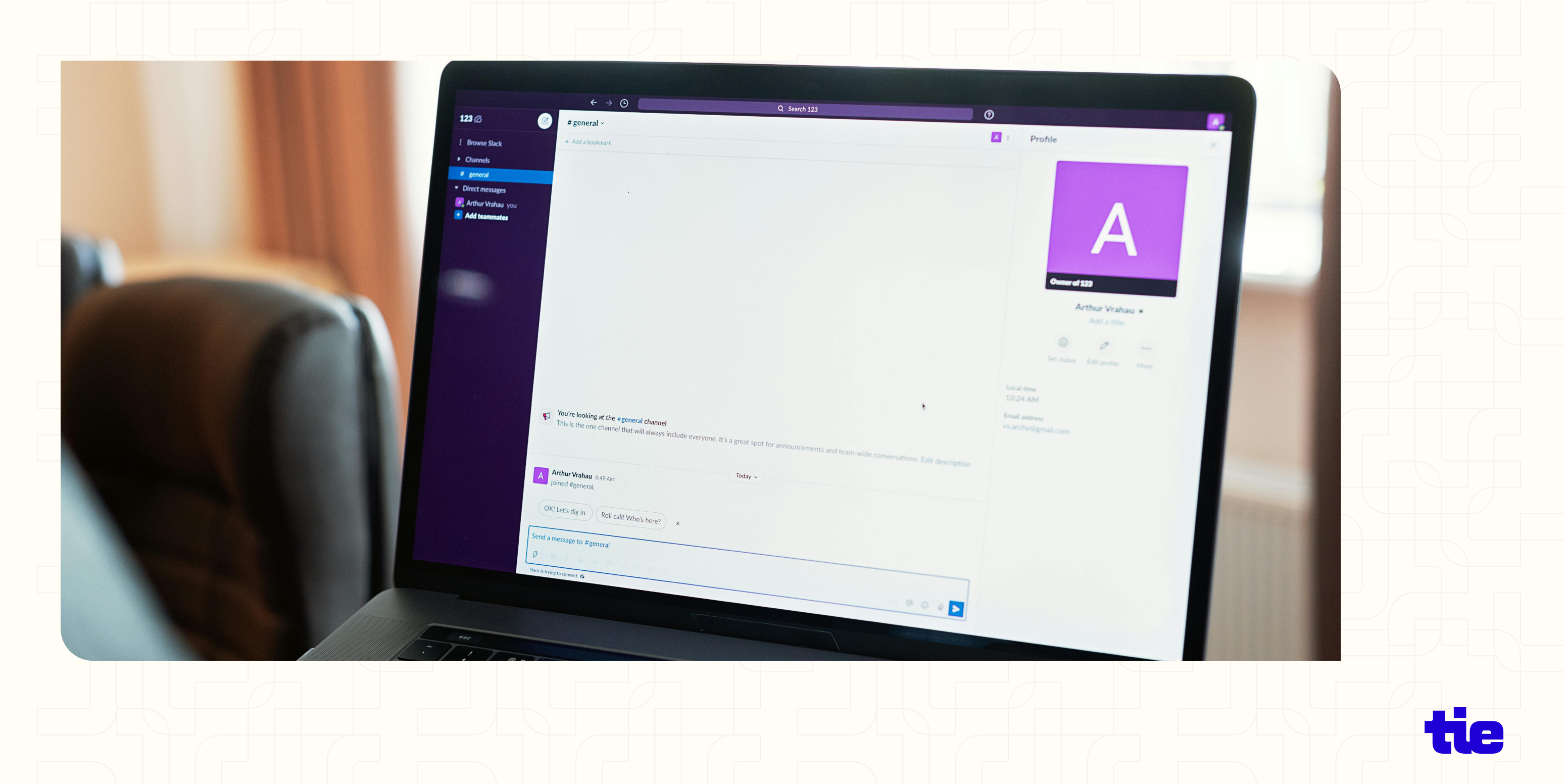
Marketing automation is essential for eCommerce brands that want to turn intent into purchases, leverage real-time behavior, and scale personalized customer experiences.
But different automation tools serve different needs. Some lack the features you’re looking for, while others may not integrate smoothly with your existing tech stack. So, how do you choose the right platform for your eCommerce brand?
To help you decide, we’ve reviewed the top eight eCommerce marketing automation tools based on features, ease of use, and core strengths to help you find the right fit for your business.
Top eCommerce marketing automation tools, reviewed
To choose the best eCommerce marketing automation software, you need to focus on the ones that support your channels, integrate with your existing stack, and help you run smarter, more efficient campaigns.
Here are eight tools worth considering, depending on the stage and priorities of your brand:
Klaviyo
Ideal for: Mid to large-sized eCommerce brands looking to run personalized email and SMS campaigns with deep segmentation to drive sales and boost revenue.
Klaviyo is a digital marketing automation software built specifically for eCommerce. It offers robust tools for email and SMS marketing, dynamic audience segmentation, personalized flows, and behavior-triggered automation.
It integrates directly with platforms like Shopify, WooCommerce, and Magento, making it easy to sync customer and order data in real time. Additionally, using a drag-and-drop interface, you can build flows around cart abandonment, product recommendations, post-purchase marketing campaigns, and more.
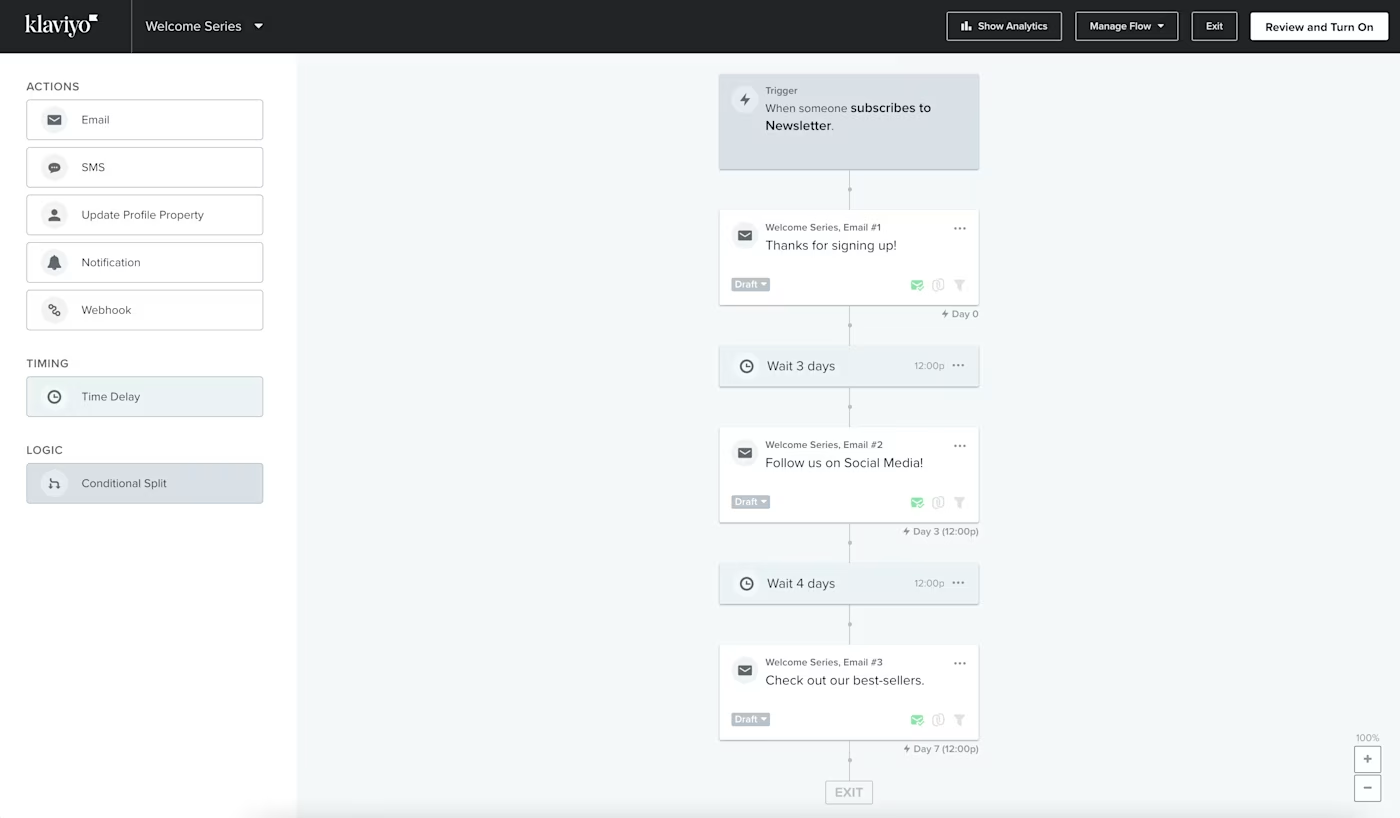
Pricing:
It starts at $45/month for email-only or $60/month for email + SMS (includes 15,000 email sends and 1,250 SMS credits). A free tier is available for up to 250 profiles.
Pros:
- 300+ integrations including Postscript, Recharge, Zapier, and more.
- Advanced segmentation using real-time customer data and behavior.
- Pre-built flows for upselling, cross-selling, cart abandonment, welcome, winback, and customer loyalty.
Cons:
- SMS credits run out quickly at higher volumes.
- Limited workflow branching compared to enterprise platforms.
- Less suited to B2B pipelines or long sales cycles.
Average user rating: 4.6 stars on G2
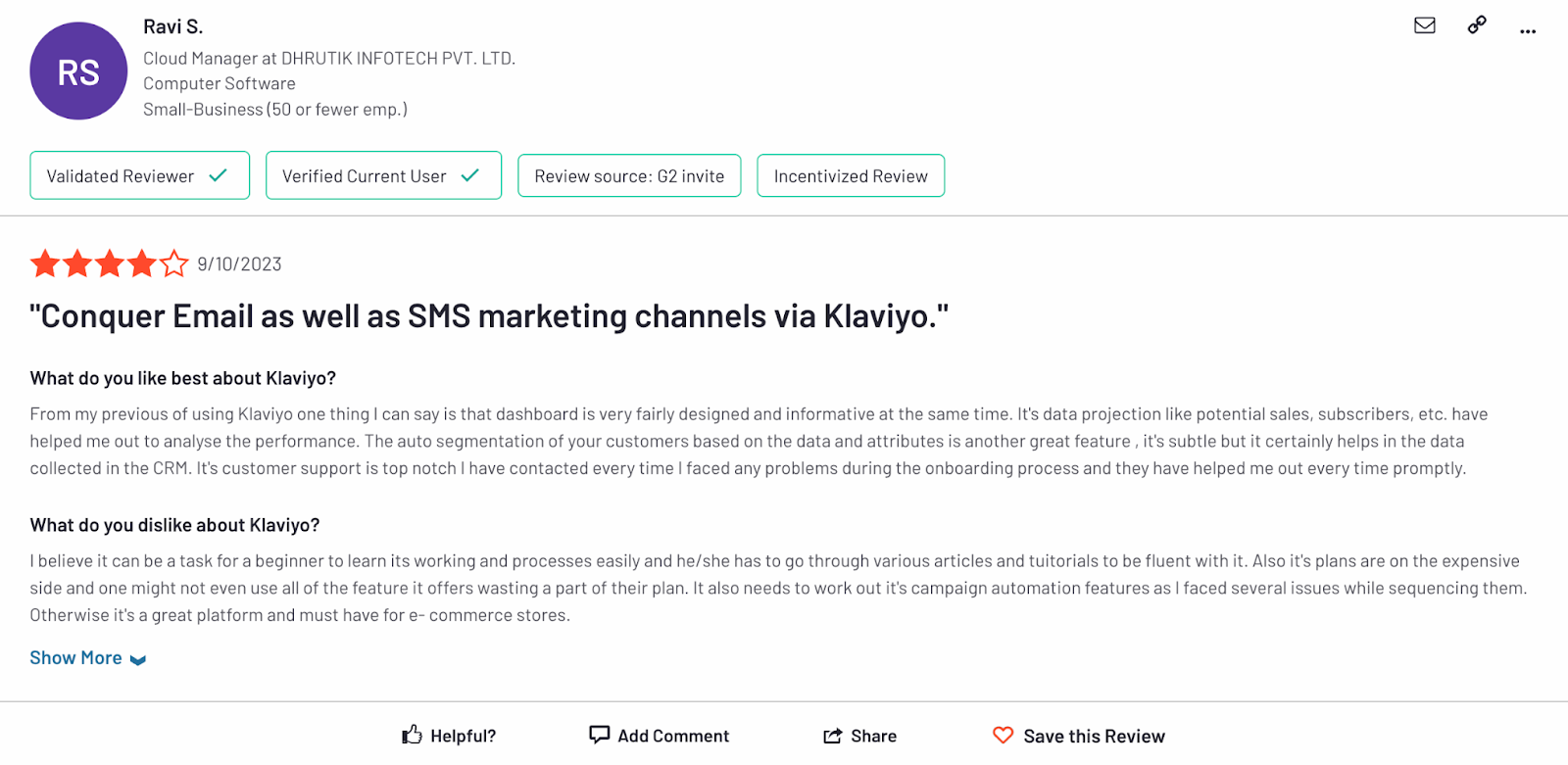
Omnisend
Ideal for: Small to mid-sized eCommerce brands that want to automate email, SMS, and web push campaigns from one platform without needing multiple tools to boost sales.
Omnisend is a marketing automation solution designed specifically for eCommerce. It lets you build synchronized campaigns across multiple channels, supported by powerful segmentation and personalization features.
You can create workflows using pre-built journeys (like cart abandonment, browse abandonment, winbacks) or customize your own with a visual drag-and-drop builder. It also includes popups, signup forms, and A/B testing tools, making it a solid end-to-end platform for campaign automation and customer interactions.
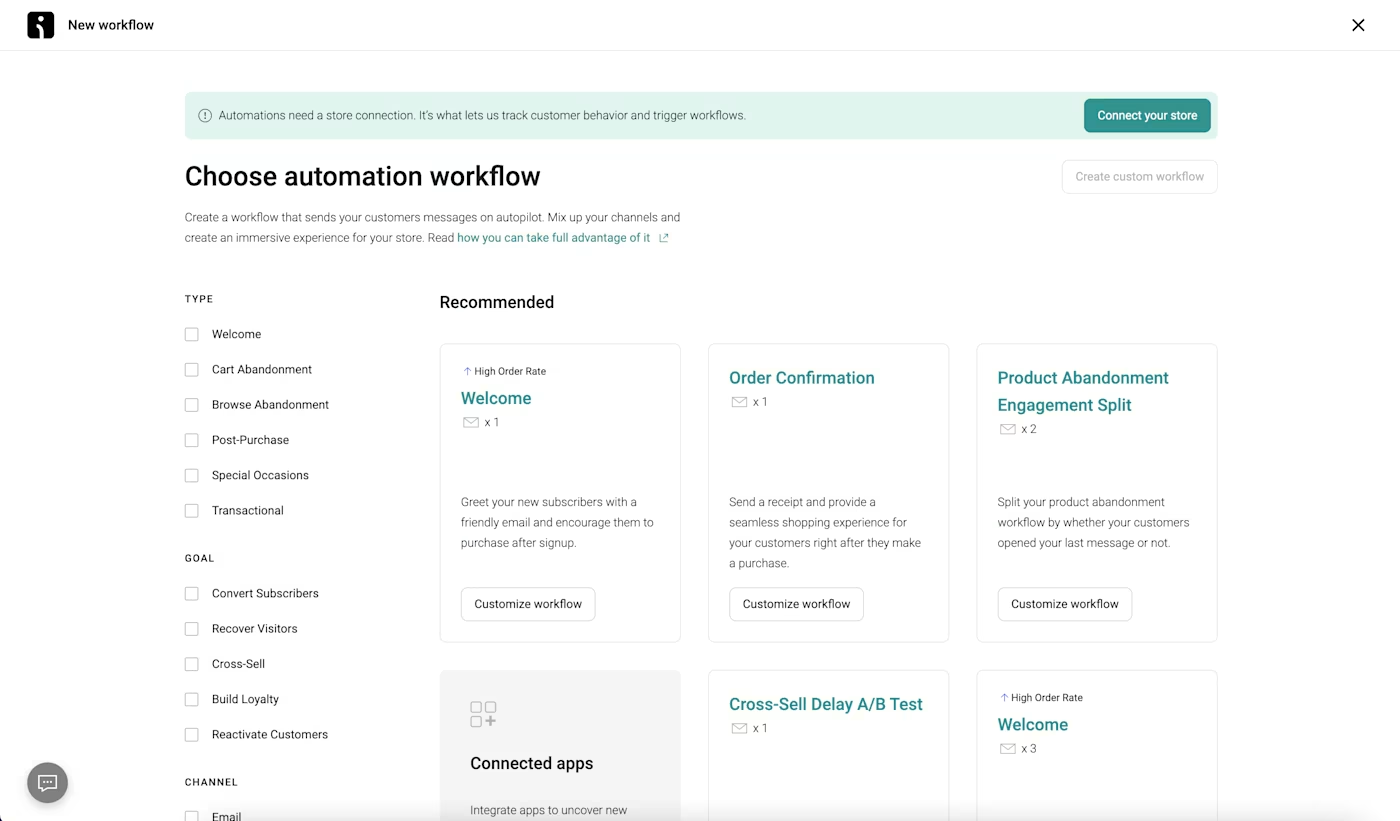
Pricing:
It starts at $11.20/month for up to 500 contacts, with 3,000 emails/month, unlimited web push, and access to all core features. A free plan with generous limits is also available.
Pros:
- Supports email, SMS, and web push from a single platform.
- Access to advanced features (segmentation, forms, pre-built flows) even on the free plan.
- 24/7 live chat and email support across all plans.
Cons:
- Less flexible for non-retail eCommerce business models.
- SMS features are powerful, but can get expensive for high-volume senders.
- Requires a live eCommerce store connection to test full functionality.
Average user rating: 4.6 stars on G2

ActiveCampaign
Ideal for: Mid to large-sized eCommerce and DTC brands that need advanced automation combined with built-in CRM capabilities, or those running both marketing tasks and sales processes under one platform.
ActiveCampaign is a hybrid marketing automation and CRM platform that helps small businesses manage the full customer lifecycle, from first click to repeat purchase. While it offers robust email and SMS automation, what sets it apart is its sales-focused features:
- Deal tracking
- Lead scoring
- Performance pipelines.
It’s well-suited for brands that want a more integrated approach to marketing and sales automation without managing separate tools.
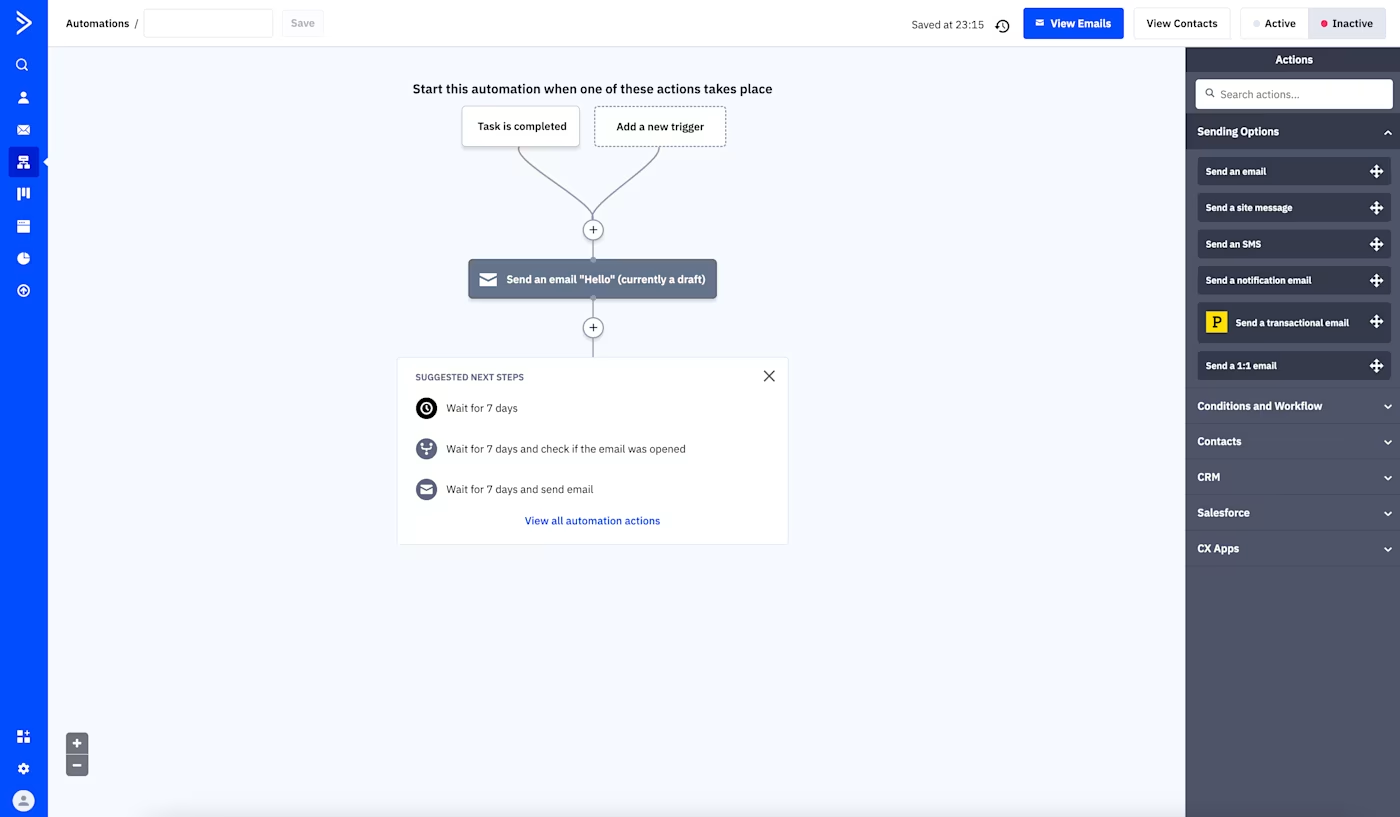
Pricing:
The Starter plan starts at $15/month. Advanced features like predictive sending and full CRM functionality are available from the Pro tier ($79/month) and above.
Pros:
- Huge library of pre-built workflows across industries and languages.
- AI tools for content generation, automation building, and predictive send timing.
- Strong segmentation and behavior tracking across email, site, and purchase history.
Cons:
- Form creation is more manual than most competitors.
- It can be a bit complex for brands only looking to automate basic flows.
- More B2B-leaning features may go unused in pure DTC or single-channel setups.
Average user rating: 4.5 stars on G2
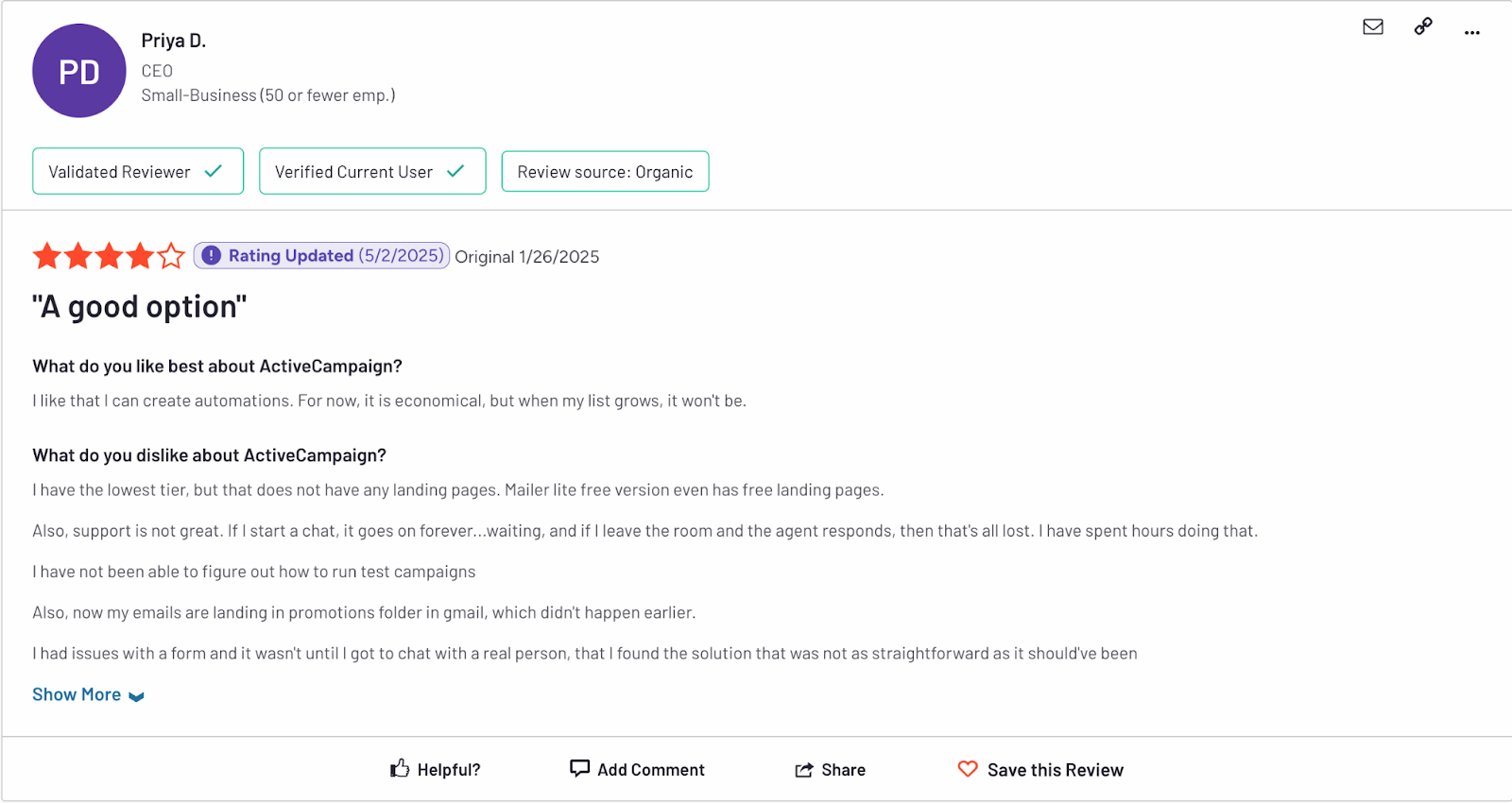
Brevo
Ideal for: Small to mid-sized eCommerce teams looking for an affordable, multi-channel marketing automation platform that also includes light CRM and scheduling features.
Brevo is a flexible all-in-one platform that combines email, SMS, WhatsApp automation, CRM, and meeting scheduling. It offers marketing automation with a visual workflow builder, A/B testing, and segmentation.
Brevo also supports transactional messaging (SMTP, API, Webhooks) and includes a meeting scheduler with branded booking pages, making it especially useful for teams with sales or support components integrated into their marketing.
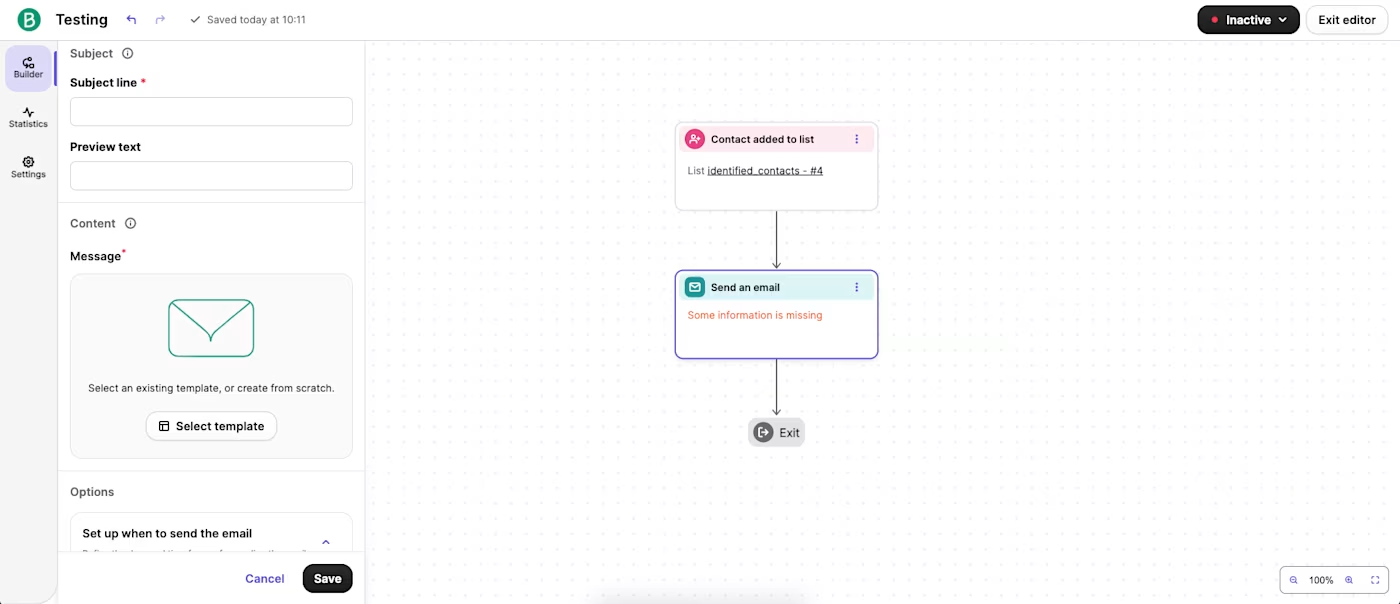
Pricing:
Brevo has a free plan available, allowing 300 emails/day. Paid plans start at $8.08/month for 5,000 monthly emails. Features like automation, A/B testing, and predictive sending are included from the Business tier that costs $16.17/month .
Pros:
- Includes a built-in CRM and meeting scheduler.
- Strong visual automation builder with logic-based workflows.
- Customizable transactional messaging setup (SMTP, API, Webhooks).
Cons:
- CRM lacks depth; not ideal for complex sales workflows.
- Some essentials, like A/B testing and advanced analytics, are paywalled behind higher tiers.
- Predictive sending is only available at the Business plan or above.
Average user rating: 4.5 stars on G2
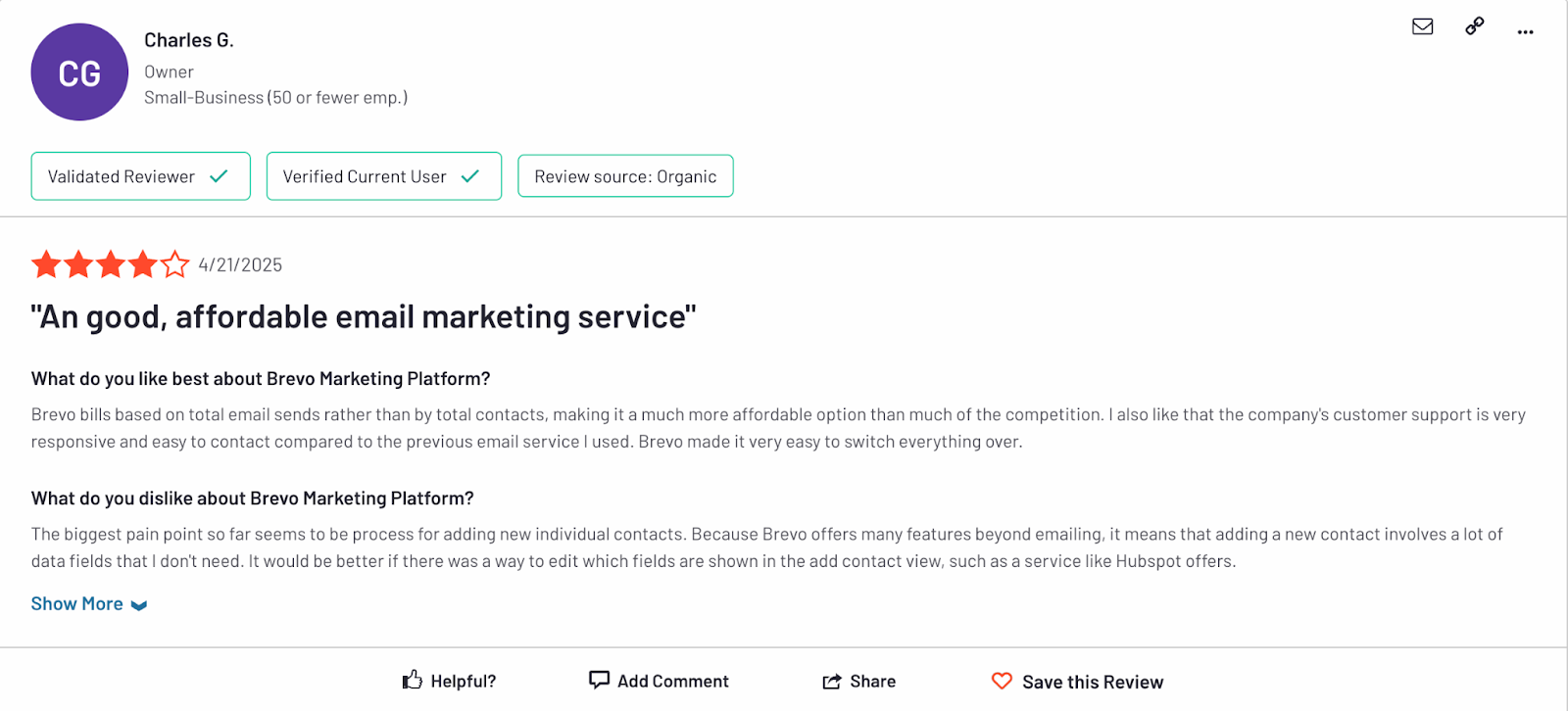
Hubspot
Ideal for: Mid to large-sized online stores that need advanced omnichannel marketing automation combined with full CRM, content, and sales ops in one platform.
HubSpot is an all-in-one eCommerce platform that offers marketing automation, CRM, CMS, customer service, and sales tools under one roof. Its “Marketing Hub” suite automates multi-channel campaigns across email, chat, social media, and landing pages, with deep segmentation, lead scoring, and audience routing logic.
The workflow builder is intuitive yet powerful, offering hundreds of action types, including integrations, internal handoffs, and ad automation.

Pricing:
The “Marketing Hub” suite starts at $800/month (Professional tier) for 2,000 contacts. Additional fees apply for onboarding ($3,000) and extra seats.
Pros:
- Extremely robust workflow builder with categorized actions and visual logic.
- Excellent UX and onboarding experience with helpful in-platform demos.
- Great for managing complex sales and marketing handoffs.
Cons:
- Some automation features are spread across multiple Hubs (Sales, Service).
- Free and Starter tiers only include limited chat-based automations.
- Complex for early-stage or low-volume eCommerce brands.
Average user rating: 4.4 stars on G2
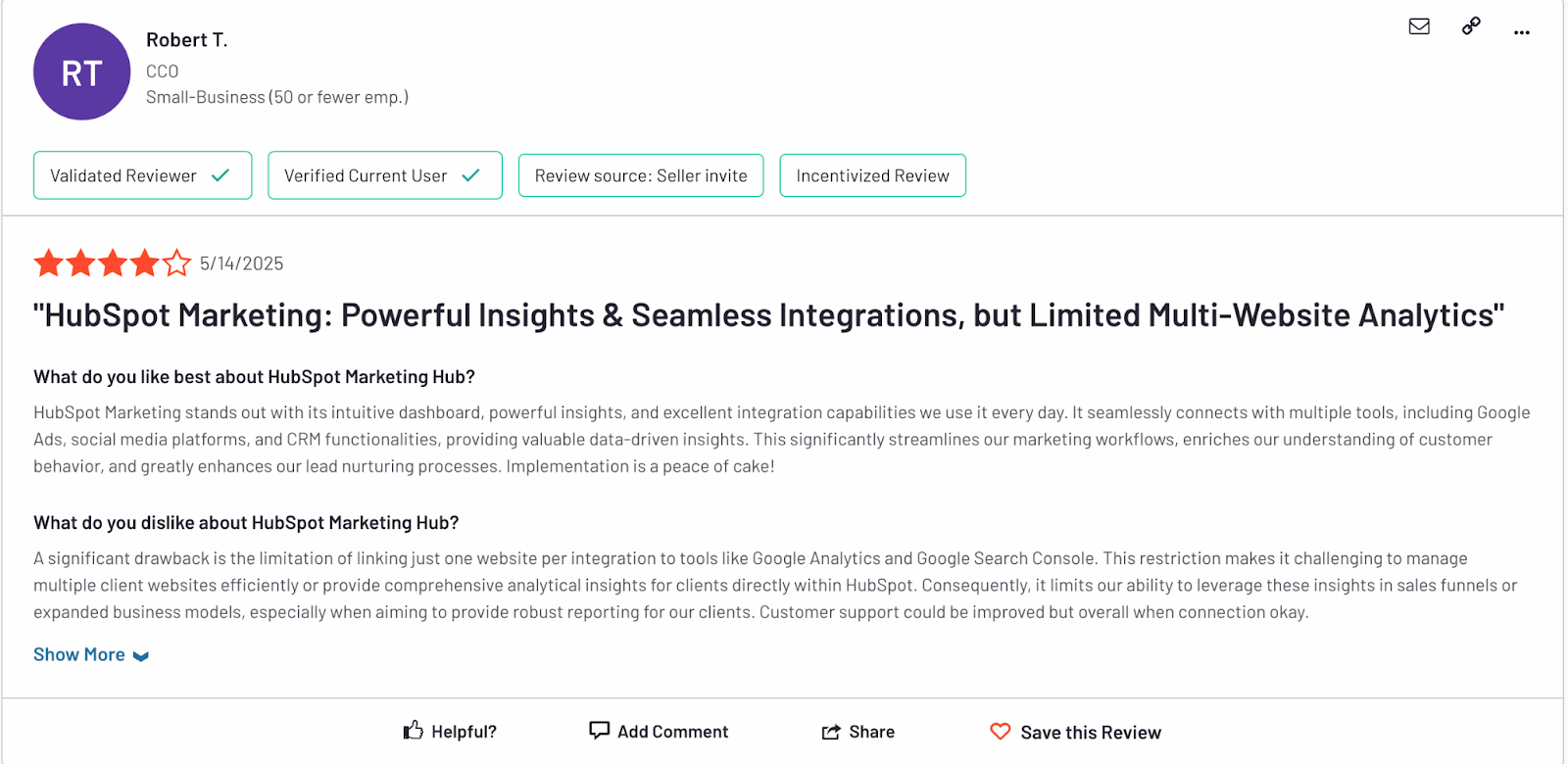
Mailchimp
Ideal for: Small to mid-sized eCommerce brands looking for an easy-to-use, email-first automation platform with basic journey-building and content tools.
Mailchimp started as a newsletter tool but has evolved into a full-fledged email marketing automation platform with content management and light CRM capabilities. It includes:
- Customer Journey Builder
- Pre-built automation templates
- AI-powered content suggestions
- Multi-step automated workflows (available from the Standard plan).
You can also build landing pages, forms, and basic websites, though the platform still heavily favors email campaigns as the core channel.
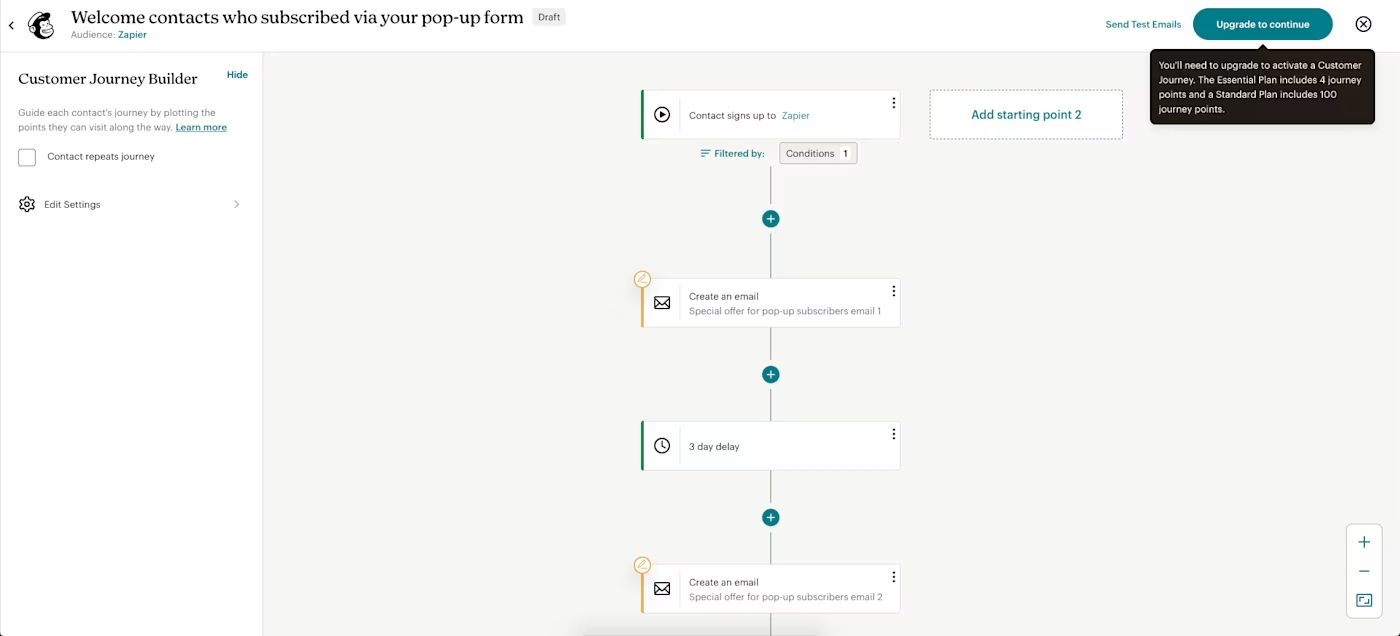
Pricing:
Mailchimp offers a free plan for up to 1,000 email sends per month. Paid plans start at $13/month (Essentials) with limited automation and $20/month (Standard) for access to full customer journeys and dynamic content.
Pros:
- Offers AI tools for content generation and optimization.
- Easy-to-use email editor, with strong drag-and-drop design flexibility.
- Great for brands getting started with automated email marketing campaigns.
Cons:
- Automation beyond basics (multi-step flows, A/B testing, predictive sending) requires the Standard plan or higher.
- Limited customer support for channels beyond email (SMS and ads require integrations).
- Less flexible than advanced tools like Klaviyo or ActiveCampaign for complex customer segmentation.
Average user rating: 4.4 stars on G2
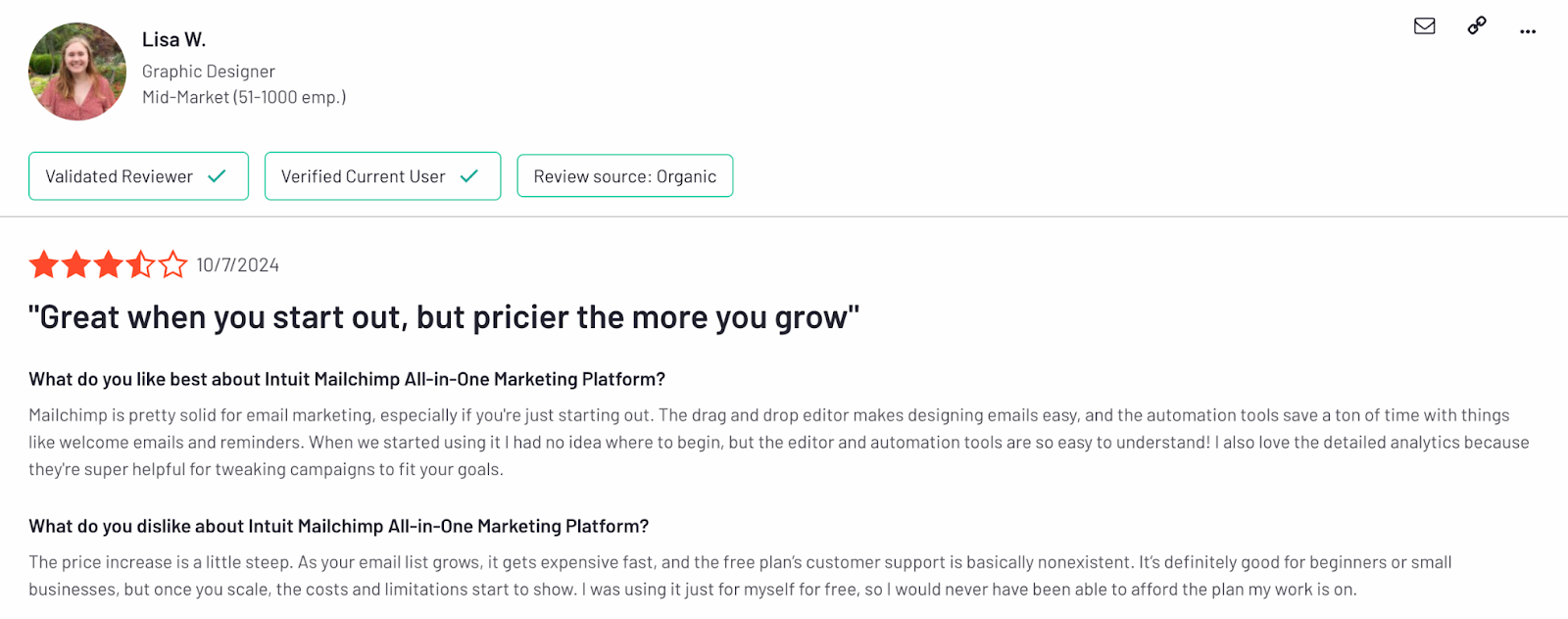
Insider
Ideal for: Enterprise and high-growth eCommerce brands that want to run personalized, AI-driven marketing automation across all digital channels from a single platform.
Insider is a comprehensive, AI-native omnichannel marketing and customer engagement platform. It is designed to unify customer data and automate experiences across web, mobile, email, SMS, WhatsApp, push notifications, and social ads.
With Insider, you can run multi-touch campaigns across platforms, orchestrate customer journeys with AI-based channel suggestions (via “Next Best Channel”), and deliver deeply personalized messages based on unified customer behavior.
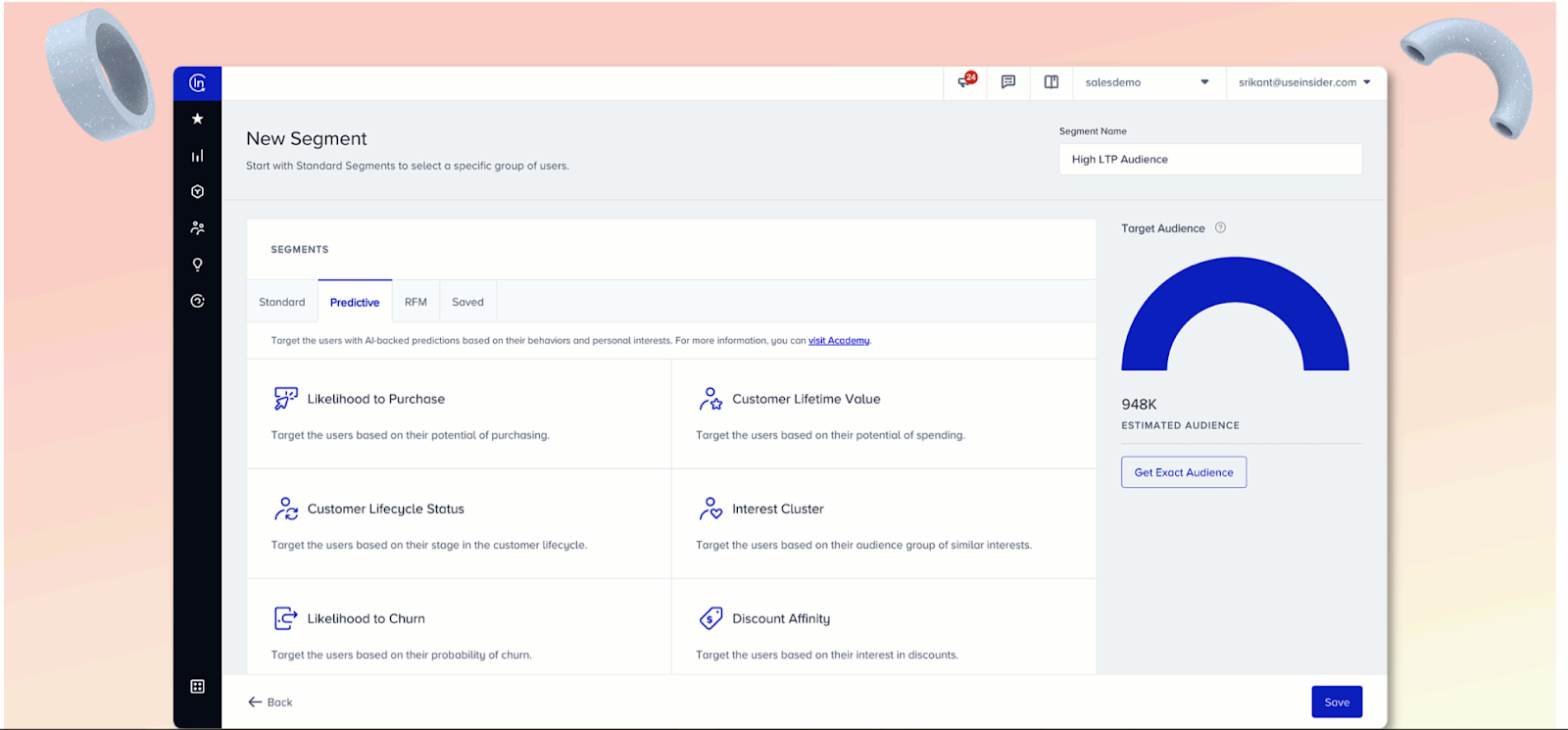
Pricing:
Insider offers custom pricing based on business size and use case. You’ll need to contact sales for a quote.
Pros:
- Omnichannel orchestration across 10+ digital channels from one user-friendly interface.
- Built-in CDP for building unified customer profiles from online and offline sources.
- Advanced journey testing, including A/B testing of entire flows.
Cons:
- High functionality may require a learning curve for small marketing teams.
- Full capabilities depend on implementation depth; it works best when integrated across all channels.
Average user rating: 4.8 stars on G2

Drip
Ideal for: Small to mid-sized eCommerce brands that want fast, behavior-based email automation, especially if you're focused on retention and not yet running ads or SMS at scale.
Drip is an automated on-site and email marketing platform built specifically for eCommerce. It offers an easy-to-use visual workflow builder, dynamic segmentation, and automated campaigns triggered by user behavior.
Through integrations with Facebook and Instagram, you can send abandoned cart emails, personalized email follow-ups, and even trigger on-site experiences or social retargeting.
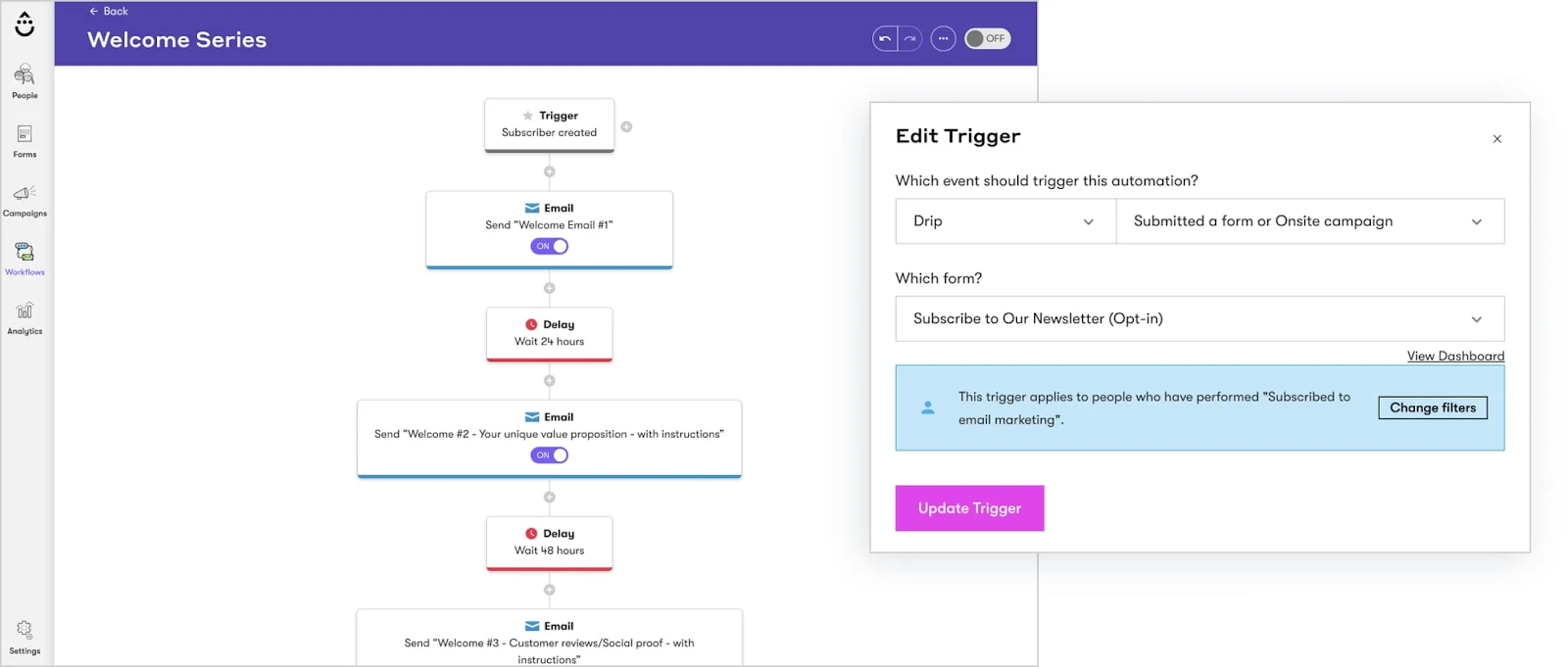
Pricing:
Drip offers a free 14-day trial, allowing you to test it out. Plans start at $39/month for up to 2,500 contacts and include unlimited emails and access to all features.
Pros:
- Behavior-based triggers for cart abandonment, product views, and more.
- Supports on-site personalization and social retargeting (via integrations).
- Dynamic segmentation to target users based on actions, not just lists.
Cons:
- Limited native channels, supports only email and on-site messaging.
- SMS, push, or ads require third-party integrations.
- May lack depth for brands needing advanced multi-channel orchestration.
Average user rating: 4.4 stars on G2
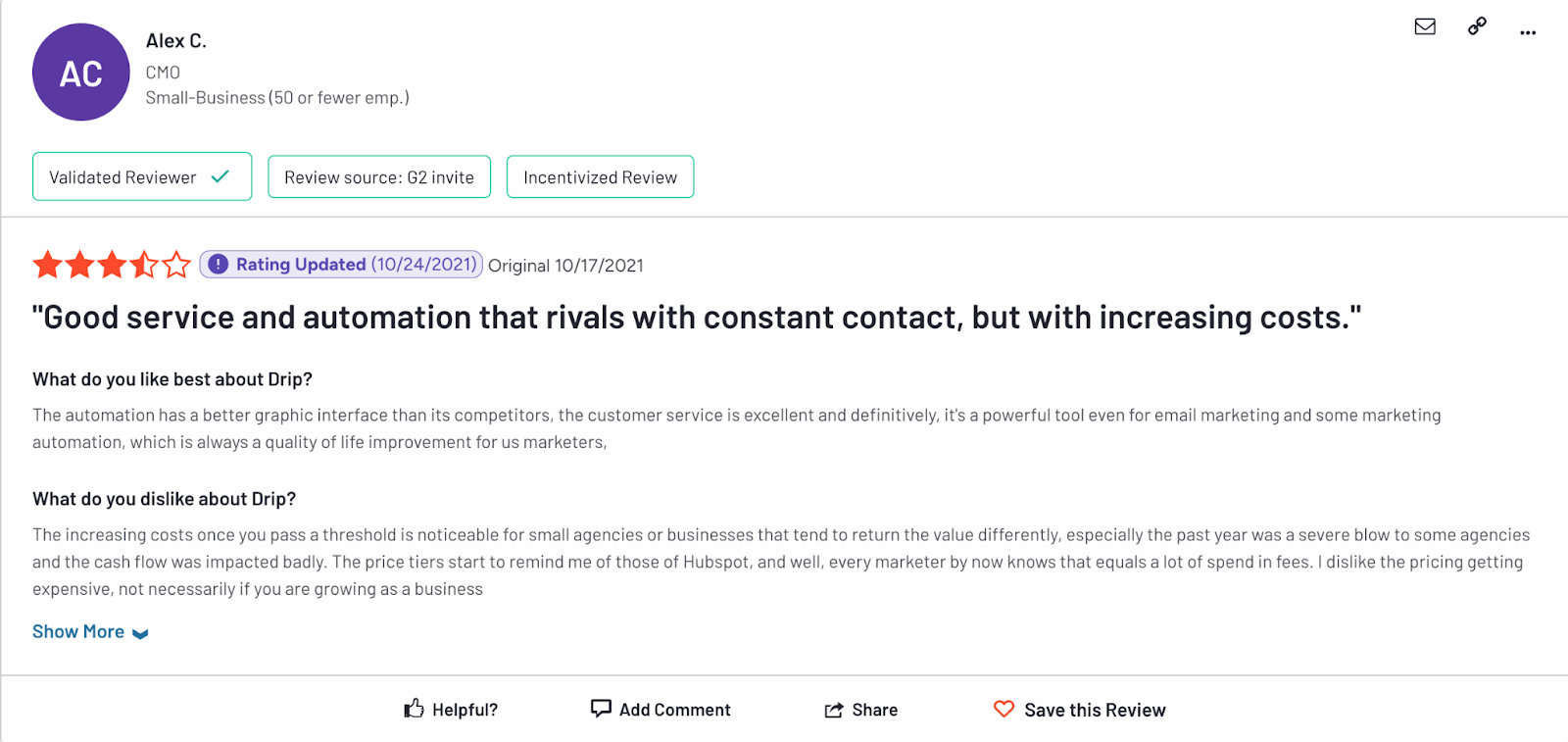
Factors to consider when picking your marketing automation tool
Since every brand has unique goals and offerings and goals, the tool you choose should align with your specific needs, not just what’s most popular. A high-volume eCommerce brand optimizing for repeat purchases won’t need the same features as a niche marketplace focused on first-time conversions.
Here’s how to assess different marketing automation platforms to find the right fit based on your brand’s goals, needs, and challenges:
Channels supported
Pick tools that let you automate across all your core channels (email, SMS, on-site, and ads) from one place. The more fragmented your tools, the harder it is to maintain campaign consistency and timing.
For example, if you’re running email on one platform, SMS on another, and ads separately, coordinating messaging and journeys becomes tedious and error-prone. Your automation platform should handle cross-channel execution without requiring workarounds.
Automation capabilities
It’s not just about sending a cart reminder anymore. Here are some specific actions your tool should enable you to do:
- Trigger flows from real-time behaviors
- Branch logic based on segments or intent
- Handle post-purchase journeys, replenishment nudges, and winback campaigns
Besides capability, check how easy it is to test and iterate. You should be able to pause flows, tweak triggers, or test variants without needing to rebuild everything.
Integrations
No matter how slick the UI, if your automation tool doesn’t plug into your existing eCommerce stack and data layer, it’s ineffective. Start with core integrations:
- Native sync with your platform (Shopify, WooCommerce, Magento).
- Identity and data enrichment layers (like Tie).
- Other tools within your workflow, like apps for bundling, subscription, post-purchase page, etc.
For example, Klaviyo integrates directly with tools like Tie to push enriched, identity-resolved profiles into your segments. That means you’re activating up to 80% of your anonymous traffic, with data like email, phone, ZIP, purchase intent, and more through Tie and then targeting them on Klaviyo.
Instead of running broad lookalike campaigns or guessing who abandoned their cart, you can build flows that respond to real behaviors across devices, even if the user hasn’t logged in.
Usability
You shouldn’t need an engineer to build a journey or change a trigger. Pick tools with:
- Visual flow builders
- Clear logic settings
- Fast editing, cloning, and segment updates
This matters more as you scale. You can move faster when you can test and launch flows without waiting for your tech team to set them up.
Analytics and reporting
You need to see exactly what’s working with your automated marketing strategy and why. Basic metrics such as open rates aren’t enough. Look for tools that offer:
- Funnel views (e.g., cart > checkout > purchase)
- Flow-level revenue tracking
- Split-testing results at each step
- Cross-channel performance comparisons (e.g., SMS vs. Email ROAS)
Prioritize tools that integrate with ad platforms for unified attribution. That’s key if you want to compare performance across touchpoints.
Budget alignment
Some tools come with hidden costs like poor deliverability, limited segmentation, or missing identity resolution. Closely evaluate what you're paying for:
- Are you charged per contact, per email, or per user seat?
- Is the pricing scalable as your traffic and list grow?
- Are key features (like testing, retargeting, or real-time triggers) locked behind higher tiers?
Usually, for most eCommerce brands, usage-based pricing (based on contacts or sends) tends to scale better than flat per-user models.
Pro tip: Bad deliverability, stale data, or untracked visitors will quietly hinder performance. Whereas, tools like Tie, which improve data quality and audience match rates before you spend, can make every dollar count.
Set up powerful marketing automations with the right tool
Your automation is only as good as the data behind it. You can’t run effective flows if your profiles are incomplete, your segments are too broad, or your targeting is based on outdated signals.
The right marketing automation tool should do more than just send emails. It should activate high-quality customer data in real time. That’s where Tie can help your brand.
Tie is an identity resolution and data enrichment platform that plugs directly into your marketing stack and gives you access to enriched, identity-resolved profiles, including previously anonymous visitors. Here’s how Tie improves your marketing efforts:
- Identify unknown visitors and sync them instantly into your ESP; no form fills required
- Enrich every profile with 250+ attributes, including location, device history, purchase intent, and more
- Unify customer behavior across sessions and devices to avoid misfires in cart recovery or retargeting
- Create smarter segments based on real behavior, not just past purchases
- Trigger dynamic flows with better timing, relevance, and conversion potential
Book a demo with Tie to see how you can power your marketing automation platform with better customer data.






